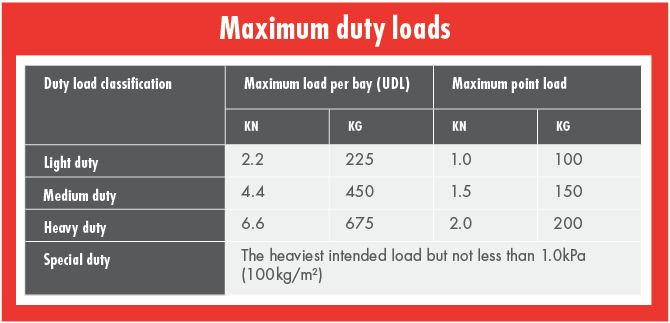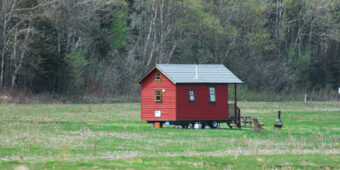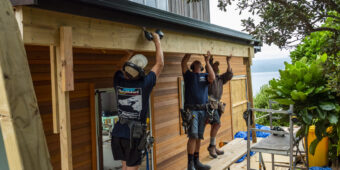Scaffolding in the frame
10 Feb 2015, Featured, Prove Your Know How, Technical
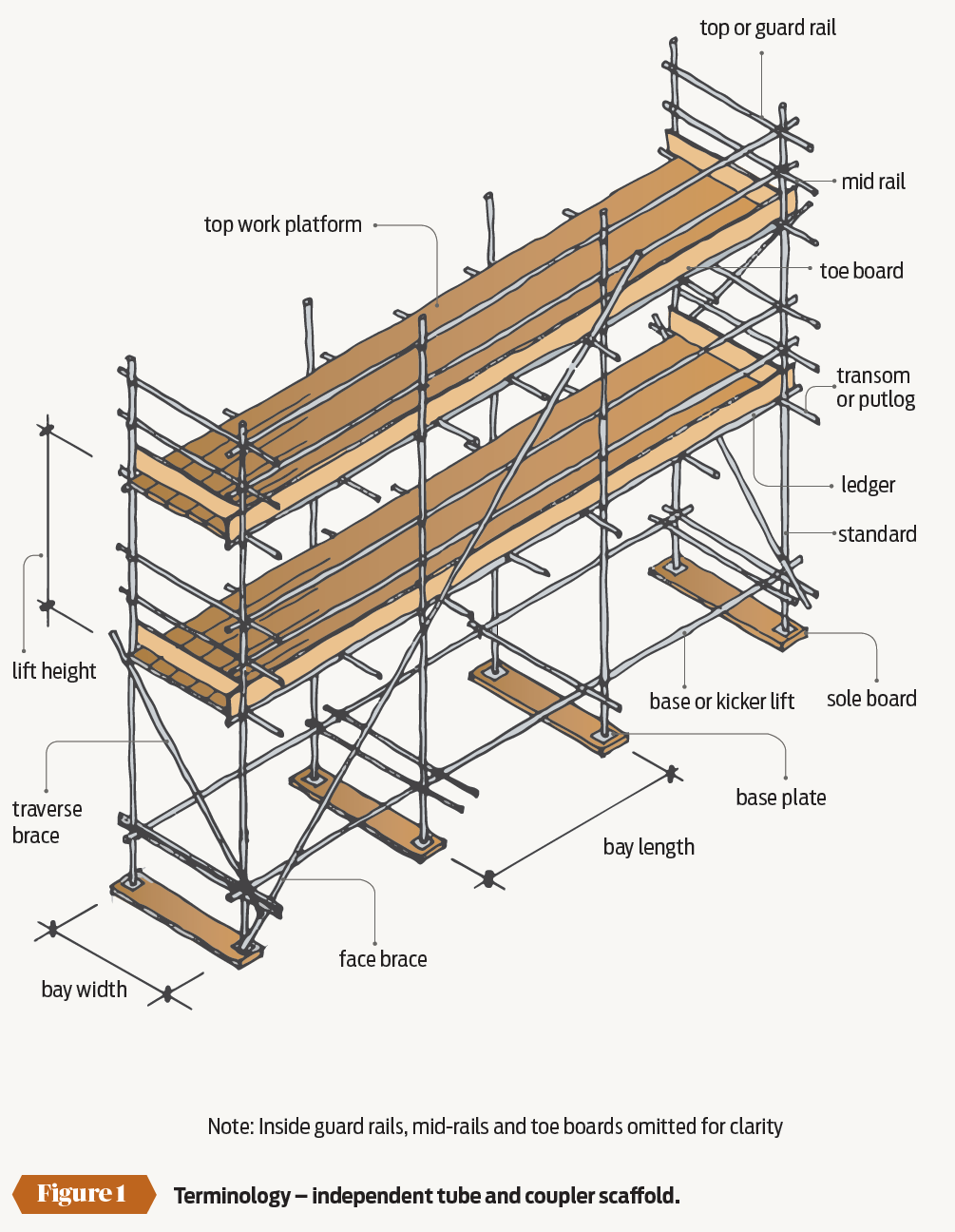
Stricter enforcement of work at height guidelines are now in place. As work ramps up, it’s time to get to grips with scaffolding best practice
Any work at height carries a risk of falling. When construction work cannot be carried out on the ground or a finished floor level, regulation 22 of the Health and Safety in Employment Regulations requires that a scaffold must be provided where work can’t be safely done without it.
Varieties of scaffolding
Scaffolding is any temporary structure erected to:
- Support people undertaking construction or construction-related work.
- Provide a safe, stable platform to work on.
- Hold the materials needed for the work being done.
A variety of scaffold systems are available, including:
- ‘Independent’ – such as tower, mobile, hung and birdcage scaffolds.
- Single-pole scaffolds.
- Suspended scaffolds.
- Bracket scaffolds.
- Trestle scaffolds.
- Spur scaffolds.
- Cantilevered scaffolds.
Know your lingo
With the exception of suspended systems, a scaffold is a framework constructed from steel, fibreglass or aluminium tubes and connected by couplers – also called fittings – to support a work platform (see Figure 1).
Scaffolds may also be constructed from timber (up to 5m high), and a range of proprietary systems are available. The vertical tubes, called standards, are connected by couplers to longitudinal horizontal tubes (ledgers) and transverse horizontal tubes (transoms).
The work platforms may be either timber or steel, in accordance with AS/NZS 1577:2013 Scaffold decking components, and are supported on transoms and putlogs (additional transverse tubes). Timber planks may be solid timber, vertically laminated timber or laminated veneer lumber (LVL).
Edge protection needed
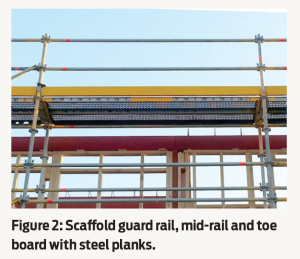 The open sides and ends of work platforms, landings and temporary stairways must protect workers against falling, by having guard rails with mid-rails and toe boards or infill panels (see Figure 2).
The open sides and ends of work platforms, landings and temporary stairways must protect workers against falling, by having guard rails with mid-rails and toe boards or infill panels (see Figure 2).
Top guard rails must be at least 900mm above the work platform. Where mid-rails are used, they must be located so that the gaps between guard rail and mid-rail, and between mid-rail and platform, are no more than 500mm.
Toe boards are installed at the platform level, so that tools or materials cannot fall off and be a hazard to anyone below. Toe boards must be continuous and a minimum of 150mm high. If infill panels are used, they must have either a kick plate or a separate toe board.
Where there is a small gap (typically 225mm, but no more than 300mm) between the scaffold and an adjacent structure, the inside edge protection may be omitted (see AS/NZS 1576.1:2010 Scaffolding – Part 1: General requirements clause 3.10.4.1).
Access
The access for scaffolds is generally a stairway, but ramps and ladders may also be used in some situations (AS/NZS 1576.1:2010 clause 3.11).
Stairs may be constructed using stair brackets with planks and tubes. Alternatively, proprietary stairway units are also available.
If possible, stairs should be located in a separate bay adjacent to the working platform. Regardless of location, the access opening should be protected by a gate or be far enough away from the working platform that someone cannot accidentally fall.
Start with A solid foundation
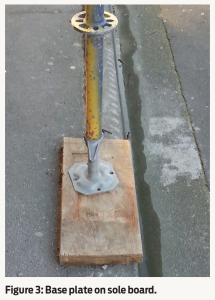 Base plates and sole boards – also referred to as base boards or sole plates – distribute the load from the scaffold standards to the ground or the supporting surface (see Figure 3).
Base plates and sole boards – also referred to as base boards or sole plates – distribute the load from the scaffold standards to the ground or the supporting surface (see Figure 3).
Sole boards are typically timber and support steel base plates connected to each standard. They must be
installed level and even, so the scaffold remains stable.
Secure scaffold
Scaffold systems need to be secured by being braced or tied to a support structure or by using stabilisers. They must be braced in at least two directions: that is, longitudinal (or face) braced, traverse braced or plan braced.
When the scaffold height is more than three times the width of the base, the scaffold must be tied to a supporting structure. Alternatively, stabilisers or outriggers can be used to increase the base width.
Scaffold design
Tube and coupler scaffolds can be adapted to almost any configuration or loading application.
They must be able to carry all imposed dead and live loads for the duration of the use of the scaffold. The dead load is the self-weight of the scaffold. Live loads include:
- Duty loads – the people and materials on the scaffold.
- Environmental loads such as wind, snow and earthquake loads.
- Impact loads that generally occur suddenly, such as when materials are placed on or taken off the scaffold.
Scaffold design must be in accordance with AS/NZS 1576: Parts 1–6 Scaffolding and AS/NZS 4576:1995 Guidelines for scaffolding.
AS/NZS 1576.1 defines four duty load categories – light, medium, heavy and special duty. These are based on uniformly distributed loads (UDLs) across each bay, but also factor in a design point load located in the most adverse position in the bay. Maximum duty loads are summarised in Table 1.
The Health and Safety in Employment Act 1992 requires risks from hazards in the workplace to be managed in
a hierarchy of elimination, isolation and minimisation. Minimisation should only be considered when elimination
and isolation are not possible.
The greatest risk from scaffolds is falling. As elimination and isolation are generally not risk management options, the risk must be minimised.
There are two main methods to minimise risk when erecting, dismantling and using scaffold:
- Employing the tunnelling method of erecting and dismantling scaffold.
- Wearing a hard hat, safety footwear, safety harness and personal fall arrest system, and being hooked
on when working in any situation where a fall can occur.
“If any part of a scaffold system is 5 m or more above the ground, it may only be erected, altered, repaired and dismantled by a person with a certificate of competence that is the appropriate class for that particular type of scaffold
The tunnelling method
The tunnelling method of erecting and dismantling scaffold is when a guard rail is progressively installed from the level below. When the scaffolder climbs onto the platform, the edge protection is already in place to create a safe zone, and the possibility of a fall is minimised.
To be defined as a safe zone, there must be both:
- A fully boarded and correctly supported platform without gaps.
- A single guard rail between 900–1100mm above the platform.
Must be qualified to install or change
Only competent people can erect, alter, repair and dismantle scaffold.
If any part of a scaffold system is 5m or more above the ground, it may only be erected, altered, repaired and dismantled by a person with a certificate of competence that is the appropriate class for that particular type of scaffold.
Scaffolding and Rigging New Zealand (SARNZ) issue certificates of competence under the authority of WorkSafe New Zealand.
When a person can fall 5m or more, scaffold work (including erection, alteration, repair and dismantling) is notifiable work under the Health and Safety in Employment Regulations (Section 2: Interpretation). The work must be notified in writing to WorkSafe New Zealand at least 24 hours before it begins.
Register to earn LBP Points Sign in


